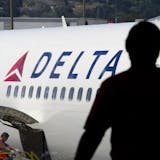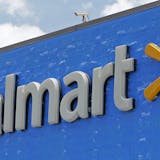The sign outside the big box in Richfield says Best Buy, but the inside of the building looks more like a mall than a single store.
The usual Blue Shirts and Geek Squad agents scurry across the sales floor, but Samsung, Microsoft, Pacific Kitchen and Magnolia occupy their own domains within Best Buy. They have large product displays, dedicated checkout areas, and employees wearing shirts that are distinctively not blue.
Best Buy stores are becoming more complex these days as CEO Hubert Joly has aggressively pursued a "store-within-a-store" concept more common among department stores and Asian retailers.
"Best Buy is really hustling to find its strategic way forward," said Robin Lewis, CEO of the Robin Report, a newsletter that tracks the retail industry.
The benefits are clear: Higher sales of popular brands plus the rent Samsung and others pay to Best Buy equals higher revenue for the consumer electronics retailer. It's a formula Best Buy appears willing to replicate with other manufacturers.
"We're always working with our vendors to find new ways to provide the best shopping experience for our customers," said Best Buy spokeswoman Carly Morris.
But in reality, the concept is untested. Does ceding space to Samsung and Microsoft drive additional traffic and sales throughout the entire store? Will a Samsung employee really give up a potential sale if a shopper visiting the Samsung Experience shop can't decide between a Galaxy smartphone or an iPhone 5?
Best Buy, after all, has portrayed itself as the retailer whose highly trained Blue Shirts offer customers knowledgeable and unbiased advice on products that best suit their needs. On a larger level, Best Buy runs the risk of eclipsing the brand that matters the most: Best Buy.



